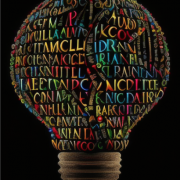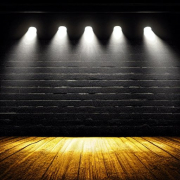Facebook leaks offer few revelations
By Ben Newman
A company values profit over all else, growing to a supermassive size by exploiting workers. It’s an age-old story, and a good way to describe many monopolies. But the Facebook monopoly adds another layer: they also exploit their users. So when the Facebook papers broke I said, “tell me something I don’t know.”
For years articles, interviews and academic studies have shown that social media ruins mental health and spreads extremism. Summing up an academic study, a Harvard Business Review headline reads, “the more you use Facebook, the worse you feel.” Social media has been devastating for teenage users, who struggle with mental health at higher rates. A graph of teen anxiety and depression shows a startling increase since 2010, the year when Instagram became available.
People began accusing Facebook and Instagram of spreading extremism and misinformation especially during the 2016 presidential election. Democrats and Republicans could paint opposing partisans in a negative light without fear of backlash. On the extreme, closed groups of right wing voters stoked fear and conspiracy, crafting stories like QAnon, which fueled Trump’s rise and eventual downfall. The capital insurrection blurred the line between the Facebook world and the real world. Some of the people who entered the building were like living internet memes: out of touch with reality and wearing comical clothing asking for a punchline. Furthermore, foreign governments have used Facebook to push propaganda, influence elections and stifle dissent.
Thanks to whistleblower Ms. Haugen, we got the unsurprising news: Facebook, like the rest of us, knows that social media is harmful.
The Facebook papers provide insights into the research the tech company has done to understand how it’s products impact children, online extremism and more. It’s a joint investigation between many different newspapers, based on information given from a whistleblower named Francis Haugen. The newsworthy story is more about Facebook’s lack of action, than the fact they know their product to be harmful. Despite the negative coverage they have gotten in the past month, they won’t move fast to change their system. At least, not without pressure from the U.S government
Our current laws protect Facebook at the expense of public welfare. Government was built to respect the freedoms of private companies while balancing other factors such as public safety, environmental welfare and maintaining a competitive marketplace.
Insofar, our government has taken a backseat on protecting it’s citizens from the harms of social media. Here are a few recommendations of regulations the government could pressure Facebook to implement.
Facebook needs a health warning. They have demonstrated they know the harmful effects of their product to consumer health. So, like a cigarette box or alcoholic beverage has a physical health warning by law, Facebook should have a mental health warning. If, for example, research suggests that more than 20 minutes of social media a day can induce depression, then Facebook should have a warning pop up at 20 minutes of use.
Facebook needs to beef up it’s content moderation. The government should force Facebook to grow it’s content moderation team, so that it can crack down on extremists and bad-doers who use the platform for malicious purposes. This practice is both in the interest of government and collective security.
Facebook must open up it’s algorithm to independent eyes. The algorithm drives much of what a user sees on their feed. Based on factors such as prior interests, hover time and clicks, one of Facebook’s own investigations found that the algorithm often serves people extremist content. With 1.1 Billion users, Facebook has a larger user base than most countries. So why are they run by an oligarchy, without oversight?
Many will say given our powers that reigning in Facebook is impossible. But, our government has significant leverage. Facebook is protected by laws dating back to the phone line which deem it a public square. In other words, Facebook is merely the carrier of information, so it is not responsible for what anyone on the platform says. Certainly, Facebook is more than a forum and is a more potent vehicle for societal maladies. In most towns, a Neo-Nazi would be ridiculed or ignored in public. In Facebook, algorithms help Neo-Nazis find each other and create their own closed town-squares full of like-minded people. The U.S could threaten to amend this law, opening Facebook to extreme legal liability, unless they institute things to protect the public.
In the meantime remains to be seen whether the Facebook files will change anything. But if there were a time for the government to step in, it would be now.
The Kansas City Star investigates it’s racist past
Great writing is enjoyable to read and covers important topics. I’m reflecting on an article from the Kansas city star. The Kansas City Star, a large newspaper in Kansas for 140 years, investigated itself for racism and reckoned with an ugly past in the wake of George Floyd’s death. The article debuted on the front page of the newspaper. In it, editor Mike Fannin apologizes for decades of coverage misrepresenting or failing to acknowledge the city’s black residents.
The story begins with a classic feature lead which serves as a brilliant hook. Fannin illustrates a picture of an influential local business which has done damage to the city by aiding systems of Jim Crow and segregation which demonized black residents. The description painted a damning picture and the omission of the business name left me wanting to read further. The Nut Graf quenched my curiosity with three words and the name of the business: “That business is the Kansas City Star.”
What struck me was the honesty of the piece. It is decisively direct in showing how it’s actions were racist and biased. Fannin discusses the newspaper’s past headlines which stoked ire towards black people and it’s white-male newsrooms which catered to white-only audiences. He discusses times in which news that affected the black population was ignored. For example, In the 70s, the local river overflowed into parts of Kansas city. Journalists covered the flooding of country club plaza, a white area, while neglecting to cover the deaths in the black neighborhoods downstream.
The investigation takes a systemic outlook, thinking further about how the actions of the Star actions promoted systems and policies which entrenched racial division and marginalization. Fannin notes that the newspaper promoted all-white developments by giving ad spots to local developers. And, the newspaper stayed on the ‘sidelines’ of the civil rights movement.
Emotional anecdotes are woven throughout the article, prompting readers to identify with those who lived in the city but could never have their voices heard. These stories angered me, and left me wanting something different from the past. Of course, we will never have the chance to go back and change it.
The story progressively pivots to discuss how the newspaper has changed, how that road has been rocky and the work that still has to be done to improve . A story like this is a P.R piece backed by investigative journalism. And it performs well at this. The Star had to balance talking about its racist past with a story of how it has transformed. When discussing how it has become better, it still takes an honest tone rather than one which is self aggrandizing. Still, I imagine that many people, especially those marginalized or underrepresented by the star, will not accept the apology as genuine.
Wandering Jews: Traveling with a Name Like That
My friend and I spent Saturday in the Israel museum which has vast collection of art and archaeological antiquities from around the world. Her parents are Israeli and she speaks fluent Hebrew despite having spent most of her childhood in the United States. We share a love of travel and have a world perspective; Every artifact we saw in the museum brought back memories of travel for each of us. An interior of a synagogue which was originally in Asia had a floor covered in sand which reminded me of a synagogue I visited in Italy where sand was also used to dampen the sounds of prayer, helping the Jewish community to keep a low profile. A display of menorahs from around the globe reminded her of her fathers family, who immigrated to Israel from elsewhere in the middle east. When we got to the Egyptian galleries, I reminisced about my adventures in Egypt. She said sadly that Egypt is a place she may never see. She explained that her name is a Hebrew word, which makes her a target for Anti Israel or Anti Jewish Harassment or violence particularly in the Arab world. She told me that as a kid her parents would tell her before getting on a plane to a foreign place not to utter a word in Hebrew, or talk about Israel for the entire trip. She didn’t understand why until she got older.
I feel safety in the fact that people don’t know that I am Jewish because of my name. Benjamin is a biblical name for Christians and Jews and Newman is British Anglo Saxon in origin. When I travel abroad, I employ a three step rule when talking with strangers; you need to ask three layers deep for me to reveal my Judaism. While I do believe that most people, especially those in the service industry are accepting, guarding myself is how I stay safe and have the best experience.
When I’ve chosen to share my Judaism with people during travel, I’ve learned a lot. My experience in Egypt was great; After a few days with our guide, who was an Arab Muslim we opened up conversations about our Judaism and trips to Israel, comparing our traditions with with Islam, ancient Egyptian traditions, and learning about geopolitics. In Vietnam, when my dad shared that we were Jewish, our flamboyant guide Li exclaimed with fascination “ohhhh you are ‘Jewit’, so you must teach your kids about money.” He wasn’t wrong. Kayaking through lake superior off of the great swath of homogeneic Anglo Christian America that is upper Michigan, my guide passed the 3 question test and when I said I was Jewish, to my surprise she said she was Jewish also. We talked about Zionism, Israel and the democrats, what it’s like being a Jew in an Isolated outpost.
When I have chosen to share my Jewish identity while traveling, I have been grateful for the conversations and insights I have gained. I am also grateful for my ability to conceal my Identity, a privilege that my friend and many others like her do not have.
My First Week in Israel: wow
I am currently writing this Saturday morning which is the sabbath day of rest. I am sitting out on the balcony in the sun with my coffee and peanut butter toast listening to the apartments across from me come alive. When Jono and I arrived in Israel we got a big hug by two strangers I had never met- such is israeli friendliness. For the first few days in Israel Jono and I stayed with those strangers who were of course his Israeli family. They brought us back to stay in their moms house outside of Tel Aviv. We had a great time at the beach, talking, eating local food (of course), and even making a song with Jono’s cousin who is a talented Jazz guitarist.
On Monday, we met up with the Aardvark program people and moved to Jerusalem to settle into our apartments. We are centrally located in nachlaot- a 5 minute walk from machne yehuda market. I live with 3 other boys, only one of whom knows how to cook… we have lots of learning to do about living on our own in addition to living in a foreign country. The past few days have been orientation; we’ve done explorations of the shuk; in the day when the vendors and commotion are exciting and in the night when the nightlife and music gives the place a wholly different face. For two days we took a trip to the north where we hiked and got to know to each other.
Back in Jerusalem for the Shabbas, we went to the western wall and prayed- a moving experience full of song, dance, and spiritual energy. The collective passion and prayer creates a power in the air unlike any other. The western wall is the holiest spot for the Jews because it is the closest place we can get to the holy of Holies- the rock upon the Temple once stood. This rock is the rock from which we believe the earth was created. I pressed myself against the wall and spent a moment feeling the connection between body and spirit.
Next week, we start classes and internships- so much excitement and new experiences await. Stay Tuned!
 http://s757071932.onlinehome.us/wp-content/uploads/2019/09/d5910b4f50df4abcbdc4d28a7817e92d.mov
http://s757071932.onlinehome.us/wp-content/uploads/2019/09/d5910b4f50df4abcbdc4d28a7817e92d.mov





